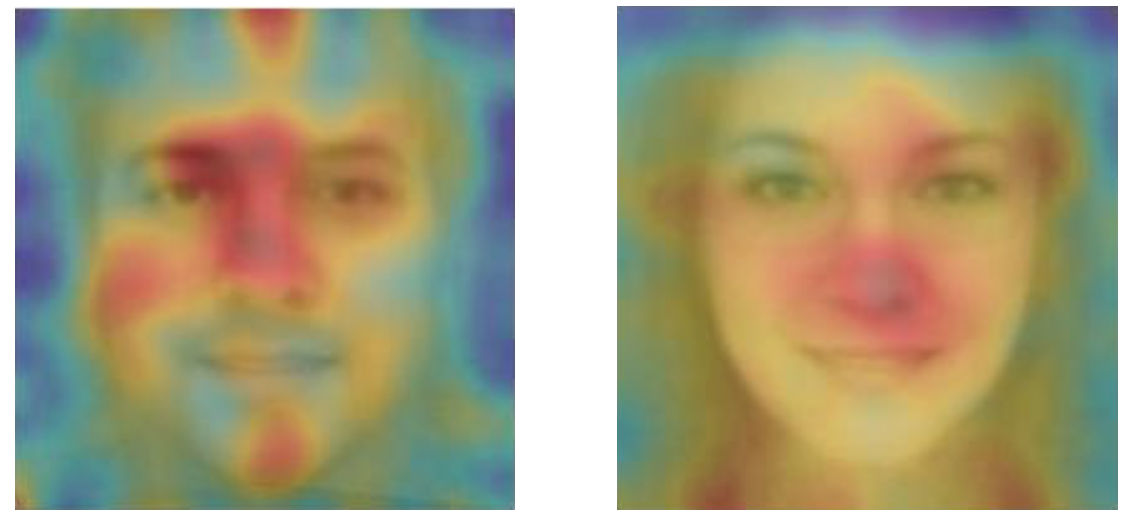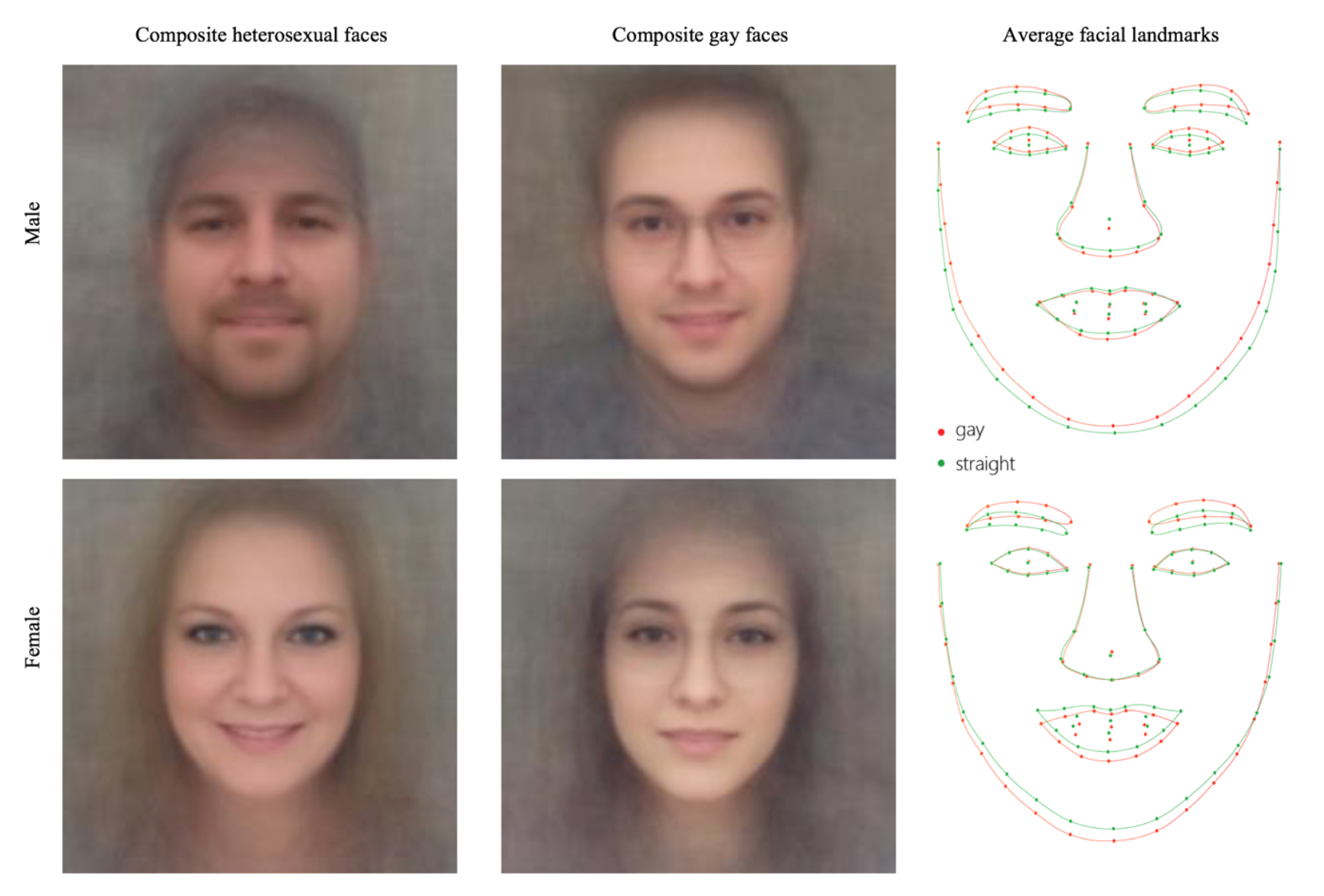theme: phrenology
Classification of sexual orientation from face images
2017

Figure 3. Heat maps showing the degree to which masking a given part of an image changes the (absolute) classification outcome, which is a proxy for the importance of that region in classification. The color scale ranges from blue (no change) to red (substantial change). The color-coded squares were smoothed using 2D Gaussian filtering.
(Wang & Kosinski, 2017)
Figure 4. Composite faces and the average facial landmarks built by averaging faces classified as most and least likely to be gay.
(Wang & Kosinski, 2017)Wang and Kosinki (hereafter, WAK) are only the most recent example of a long history of discredited studies attempting to determine the truth of sexual orientation in the body. These ranged from 19th century measurements of lesbians’ clitorises and homosexual men’s hips, to late 20th century claims to have discovered “gay genes,” “gay brains,” “gay ring fingers,” “lesbian ears,” “gay scalp hair,” or other physical differences between homosexual and heterosexual bodies. For WAK, facial differences “are consistent with the prenatal hormone theory of sexual orientation,” by which “gay men and women tended to have gender-atypical facial morphology, expression, and grooming styles” (p. 1). In citing a reductive version of hormone theory, WAK thus recycle 19th century sexual inversion theory, which posits that lesbians are hypermasculine women and homosexuals are effeminate men.
(Mattson, 2017)theme: phrenology